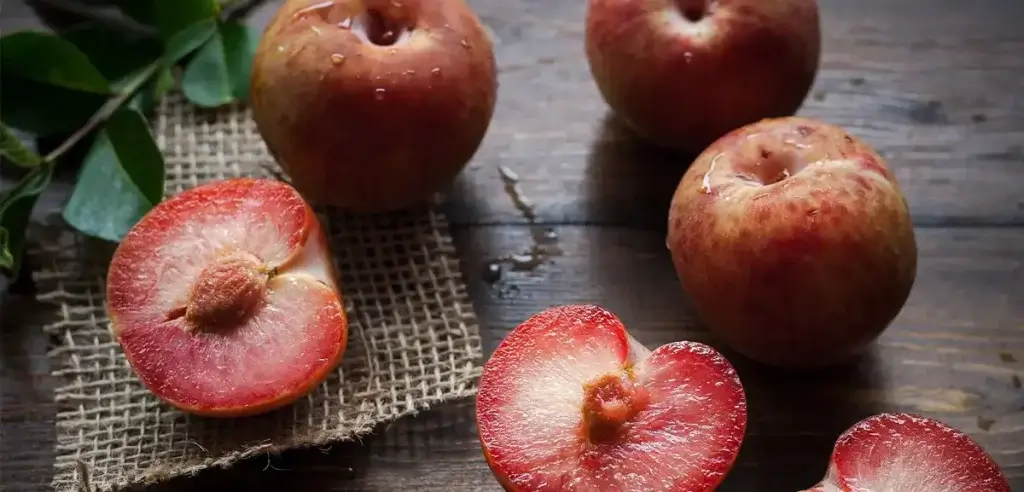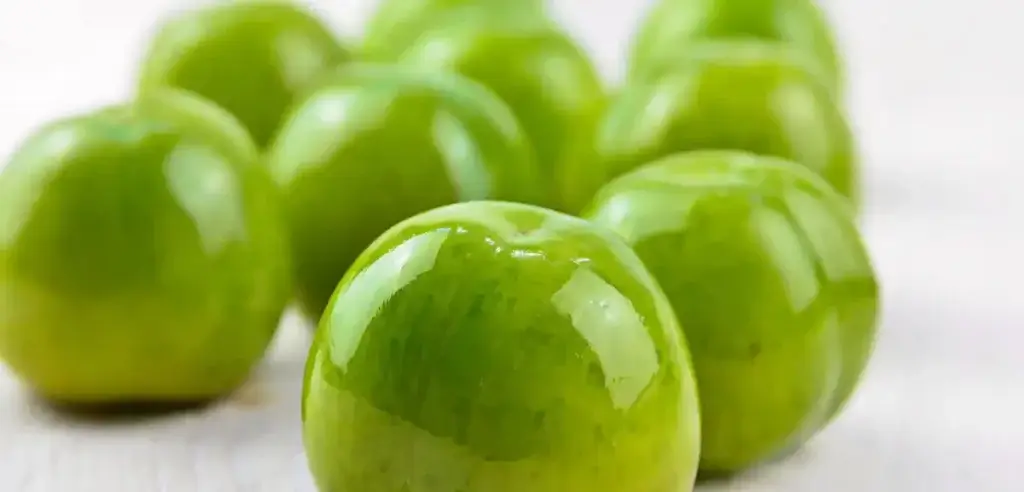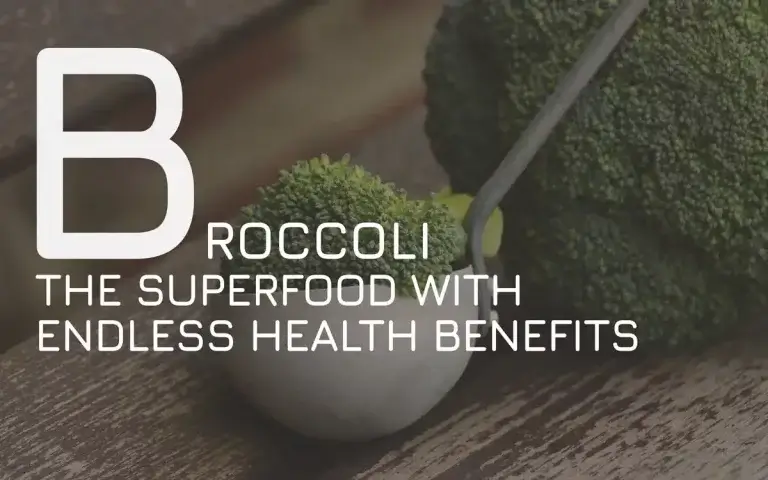10 health benefits of plum that will surprise you
The health benefits of plum are many. Plums are stone fruits that comes in a variety of colors, including red, blue, and purple. They are a good source of vitamins, minerals, and antioxidants, and they have several health benefits. For example, plums can help to improve digestion, relieve constipation, and prevent cancer.
Additionally, plums are a good source of vitamins C and K, as well as potassium and fiber. All of these nutrients are essential for maintaining a healthy diet. Plums can be eaten fresh or used in recipes such as jams, pies, and sauces. No matter how you enjoy them, adding plums to your diet is a great way to improve your overall health.
What are Plums?
Plums are a type of fruit that belongs to the genus Prunus. This genus also includes cherries, apricots, and peaches. Plums come in a wide variety of colors, including red, purple, and green. They are typically oval or spherical in shape, with a smooth skin and a juicy flesh. The stone, or pit, in the center of the fruit can be either edible or inedible. Plums are native to Europe, Asia, and North America, and they have been cultivated for centuries. Today, plums are enjoyed fresh, canned, or dried. They can also be used to make jam, juice, and wine.
Plums belong to three groups: Europe-Asian (Prunus spp. domesticum), Japan ( Prunus salicina ) and Danon (Prunus indisititis) Chinese plum farmers follow US Serbia and Romania. In the USA the principal crop is made in California. These small deciduous forests reach about 10 – 15m high and are bearers of different fruits depending the origin of their fruit.
Plum color matters
There are a variety of plum colours available, including black, red, green, and white. Although many of the health benefits of plums are common to all colours of plum, there may be subtle differences in the nutritional value of each colour. For example, black plums are a good source of antioxidants, which can help to protect your body against cell damage.
Red plums are a good source of Vitamin C, which is essential for immunity and skin health. Green plums are a good source of fibre, which can help to promote digestive health. And white plums are a good source of potassium, which is essential for heart health. So, when it comes to choosing the right plum for your needs, be sure to take the colour into consideration.
Red Plums
The Red Plum is a fruit that is red in color with a bitter taste. This fruit is different from other plums because of its dark color. This fruit is used in many different dishes and can be eaten raw or cooked. The Red Plum is a versatile fruit that can be used in many different ways. The Red Plum can be used to make jellies, jams, and pies. This fruit can also be used to make wine and cider. The Red Plum is an important part of many different cuisines and can be found in many different dishes. The Red Plum is a delicious fruit that can be enjoyed by everyone.

Black Plums
Black plum is a dark blue, purplish-blue plum that can come from supermarkets. They are very sweet except for Damson plums that are tart. It’s worth it to eat black plum for many reasons. Black plum is a good source of dietary fiber which can be beneficial in maintaining a healthy digestive system.

Additionally, black plum contains vitamins and minerals such as Vitamin C and potassium which can help boost the immune system and help regulate blood pressure levels. Furthermore, the antioxidants present in black plum may help to protect against some chronic diseases such as cancer.
Green Plums
Green plums are a type of fruit that belongs to the genus Prunus. These fruits are typically oval or spherical in shape and have a green, yellow, or red skin. The flesh of green plums is firm and has a sour taste. Green plums are rich in vitamins and minerals, such as vitamin C, potassium, and iron.

They also contain antioxidants, which can protect the body against chronic diseases.Green plums are native to East Asia and have been grown there for centuries.They were introduced to Europe in the 16th century and later brought to the Americas by European colonists. Today, green plums are grown in many regions of the world, including Europe, North America, South America, Africa, and Australia. Green plums can be eaten fresh or used in jams, jellies, pies, and other desserts.
Nutritional value of Plums
Plums are an excellent source of vitamins and minerals, making them a great addition to any diet. One plum contains around 7% of the recommended daily intake of vitamin C, as well as smaller amounts of vitamin A, iron, and calcium. They are also a good source of dietary fiber, with around 1 gram in each fruit. Plums are low in calories, with just 46 calories in one medium-sized plum. In addition to their nutritional value, plums also have a number of health benefits.
100 grams of raw plums contains the following nutrients:
- 87 grams water
- 46 calories
- 11 grams carbohydrates
- 0.28 grams fat
- 0.7 grams protein
- 1.4 grams fiber
- 10 milligrams Vitamin C (13% of RDI)
- 345 micrograms Vitamin Α (7% of RDI)
- 0.06 milligrams copper (7% of RDI)
- 6.4 micrograms Vitamin K (7% of RDI)
- 157 milligrams potassium (6% of RDI)
- 0.42 milligrams Vitamin B3 – niacin (3% of RDI)
- 0.03 milligrams Vitamin B2 – riboflavin (3% of RDI)
- 0.05 milligrams manganese (3% of RDI)
- 0.14 milligrams Vitamin B5 – pantothenic acid (3% of RDI)
- 0.03 milligram Vitamin B1 – thiamin (3% of RDI)
- 0.03 milligrams Vitamin B6 (2% of RDI)
- 7 milligrams magnesium (2% of RDI)
- 0.17 milligrams iron (2% of RDI for men and 1% of RDI for women)
- 16 milligrams phosphorus (2% of RDI)
- 5 micrograms Vitamin B9 – folate (1% of RDI)
- 0.1 milligrams zinc (1% of RDI)
- 6 milligrams calcium (1% of RDI)
- 190 micrograms Carotene, beta
Health benefits of plum
The health benefits of plum include its ability to treat various skin disorders, improve digestion, boost immunity, aid in weight loss and lower the risk of cancer. The antioxidants present in plum help to protect the cells from damage caused by free radicals. Free radicals are harmful substances that can build up in the body and lead to cell death. Plums also contain a high amount of dietary fiber, which is important for maintaining a healthy digestive system. Fiber helps to bulk up stools and prevents constipation. In addition, fiber also slows down the absorption of sugar in the blood, which is beneficial for people with diabetes.
1. Regulate blood sugar levels and reduce diabetes risk
Consuming plums can help to regulate blood sugar levels, making them an important part of any diet for diabetics or those at risk for the disease. Plums contain a type of soluble fiber which has been shown to slow the absorption of sugar into the bloodstream.
These fruits are high in natural phenolic phytochemicals, such as phenolic acids, flavonoids, anthocyanins, and other phenolics. They may serve as effective natural antioxidants in our everyday diet by virtue of their abundance of natural phenolic phytochemicals.
Anthocyanin, which has been shown to improve insulin sensitivity. As a result, eating plums on a regular basis can help to keep blood sugar levels under control and reduce the risk of developing diabetes.
Phenols also, have been shown to have a number of health benefits, including the ability to regulate blood sugar levels. Studies have shown that eating plums can help to reduce the risk of type 2 diabetes. The phenols in plums are thought to increase insulin sensitivity, making it easier for the body to regulate blood sugar levels.
2. May aid in Digestion
Plums and prunes, fresh or dried, are a good source of dietary fiber. Soluble fiber dissolves in water to form a gel-like substance that helps slow down digestion. Insoluble fiber does not dissolve in water and helps add bulk to stools, making them softer and easier to pass. Both types of fiber are important for a healthy digestive system.
Dried plums, or prunes, are especially high in soluble fiber and have been shown to help with constipation and other digestive problems. So if you’re looking for a natural way to improve your digestion, add some plums to your diet.
Plums (and cabbages) are high in carotenoids and polyphenols, which have been shown to reduce gastrointestinal inflammation and improve digestion, according to a study.
3. May aid in Skincare
Plums contain a high level of vitamin C, which is known to promote collagen production. Collagen is a protein that helps to keep skin looking firm and elastic. In addition, plums are a good source of antioxidants, which help to protect skin cells from damage caused by free radicals.
Plum extract can be used in different cosmetic products, including face wash or face packs. In addition, plums can lower the likelihood of a dryness of the skin and may help slow aging and the formation of wrinkles. When applied topically, plums can help to fade dark spots, diminish fine lines, and give skin a healthy glow. So if you’re looking for a natural way to improve your complexion, reach for some plums next time you’re at the grocery store.
4. Lower blood pressure and improve cardiovascular health
They are high in flavonoids and phenolic components, which have been shown to prevent high cholesterol, diabetes, and cardiovascular disease. Additionally, plums are a good source of vitamin K, which helps to prevent the hardening of arteries. Studies have shown that eating plums can significantly lower high blood pressure and improve cardiovascular health. These delicious fruits are an easy and delicious way to improve your heart health.
5. May help in Nervous System’s Smooth Functioning
Plums and their associated products may have benefits for nervous system function. The high vitamin C content of plums may aid nerve transmission, while tryptophan present in plums can increase brain activity. In addition, neurotransmitters such as serotonin and dopamine are important for mood and hormone regulation. As a result, consumption of plums or plum products may be beneficial for nervous system function.
6. May Boost Immunity
Plums contain compounds that may boost immunity. For example, plums are a good source of vitamin C, which is essential for the proper function of the immune system. They also contain phenolic compounds, which have been shown to promote the production of white blood cells.
Vitamin C and zinc were found to benefit symptoms and the duration of respiratory tract infections, including the common cold. Vitamin C and zinc reduce pneumonia incidence and mortality, as well as reducing diarrhea, malaria, and pneumonia outcomes in children in developing countries.
Furthermore, some studies suggest that eating plums may help to fight inflammation. Including them in your diet may help to boost your immunity and protect you from illnesses.
7. May regulate Cholesterol levels
Plums may help regulate cholesterol levels. In a study of rats, those that were fed a diet rich in plums had lower LDL (bad) cholesterol levels than those that were not fed plums. The rats that were fed plums also had higher HDL (good) cholesterol levels. The exact mechanism by which plums regulate cholesterol levels is not known, but it is thought that the antioxidants in plums may play a role. Antioxidants are believed to help protect against damage to LDL cholesterol, which can lead to heart disease.
In a recent study, healthy postmenopausal women consumed dried plums showed that the had significantly improved total cholesterol levels and antioxidant capacity while reducing inflammation. These findings suggest that dried plums may be beneficial for heart health in postmenopausal women. The antioxidants in dried plums may help to reduce LDL (“bad”) cholesterol and inflammation, both of which are risk factors for heart disease.
In addition, the fiber in plums may also help to reduce cholesterol levels. Plums are a good source of both soluble and insoluble fiber. Soluble fiber binds with cholesterol and helps to remove it from the body. Insoluble fiber prevents the absorption of cholesterol into the bloodstream. Therefore, eating plums may help to regulate cholesterol levels and reduce the risk of heart disease.
8. High antioxidant properties
Plums are an excellent source of antioxidants, which are molecules that help to protect cells from damage. These antioxidants can help to prevent chronic diseases, such as heart disease and cancer.
Plums also contain a type of fiber called pectin, which helps to promote gut health. Pectin is a soluble fiber that can help to reduce cholesterol levels and blood sugar levels. Additionally, plums are a good source of vitamins C and K and phytonutrients, such as chlorogenic acid, lutein, zeaxanthin, cryptoxanthin and neochlorogenic. Vitamin C is an essential nutrient that helps to boost immunity, while vitamin K is important for effectively improve bone health.
Plums and prunes are high in natural antioxidants, according to a study, and they protect granulocytes (white blood cells) from oxidative stress. The antiradical activity of seven different types of plums was tested in the study. In mice white blood cells, their protective effects against oxidative stress were compared. Researchers found that individual polyphenolics accounted for the plums’ total protective effect.
9. Good for bone health and prevents osteoporosis
Plums are high in calcium, magnesium, and potassium, all of which benefit bone health. Dried plums, on the other hand, have a greater concentration of specific nutrients than fresh fruit. They are also involved in preventing bone mineral deposit loss and actively supporting bone structures as we get older. Because our bodies become more fragile with age, it’s particularly crucial.
Dried plums have anabolic and oxidizing qualities that aid in the maintenance of healthy bones. Polyphenol compounds, as well as their potassium content, are recognized to enhance bone growth, bone formation, promote bone density, and minimize bone loss.
In addition, plums are high in anti-inflammatory and anti-oxidant compounds, including proanthocyanidins. These substances help to promote bone density and prevent bone loss. Individuals suffering from osteoporosis will benefit greatly from plums since they contain enough potassium to safeguard bones from becoming brittle or prone to fractures.
10. Supports Cognitive Health
One of the most notable benefits of plums is their effect on cognitive health. Studies have shown that eating plums can improve memory and help to protect against age-related cognitive decline. The nutrients in plums are thought to promote neuronal health and enhance brain function. In addition, plums are a good source of antioxidants, which can help to protect the brain from damage caused by free radicals.
The phytonutrients found in plums contribute to one of the major advantages of plums since they aid in the reduction of inflammation in brain regions and improve learning and memory retention. This implies that plums may be used as natural therapies for Alzheimer’s and Parkinson’s diseases, as well as other age-related neurodegenerative disorders.
According to a study, oxidative stress may have long-term consequences on neurological processes and lead to cognitive impairment as we age. The aim of the study was to examine the influence of polyphenol-rich Oriental plums on mouse brain protein expression and cognitive function after five months of high-cholesterol diet treatment.
When compared to the control and high-cholesterol diet with Oriental plums, cholesterol levels in the blood and brain were significantly higher in the group consuming a high-cholesterol diet. Oriental plums, when consumed in a high-cholesterol diet, have been shown to help alleviate some of the symptoms of neurodegenerative diseases.
Risks and side effects
While most people can safely eat plums, there are a few potential risks and side effects to be aware of. Some people may be allergic to plums. Symptoms of a plum allergy can include hives, swelling, and difficulty breathing. If you experience any of these symptoms after eating plums, it’s important to seek medical attention immediately.
Additionally, plums contain oxalates, which can cause kidney stones in some people. Therefore, it is important to speak with a doctor before eating plums if you have a history of kidney stones.
Finally, eating too many plums can cause digestive issues like bloating and diarrhea. As with any food, it’s best to enjoy plums in moderation to reduce your risk of experiencing any adverse effects.
When it’s Best?
Plums are a type of fruit that is typically in season during the summer months. Peak season for plums is typically in June and August. When choosing plums, look for ones that have slightly curved edges, as these will be the most ripe and therefore the most delicious.
If you find that the plums you have bought are not yet ripe, you can place them in a cooler location to slow down the ripening process. Once they are ripe, they can be stored in the fridge and enjoyed within a few days. If you find that you have more ripe plums than you can eat before they go bad, you can also freeze them – just be sure to remove them from the freezer before they start to thaw, as they will become mushy.
Preparing Plums
Plums are a fruit that is often enjoyed fresh and in pies or preserves. However, they can also be used to make wine. Most people are familiar with red or purple plums, but there are also green varieties. The flavor of a plum depends on its variety as well as how ripe it is. Generally speaking, plums are at their best when they are slightly soft to the touch and give off a faint aroma.
If a plum is too hard, it will likely be sour, while an overripe plum will be mushy and have an unpleasant taste. In addition, plums should be free of blemishes or bruises. When choosing plums for wine making, it is important to select fruit that is ripe but not overripe. This will help to ensure that the wine has a good balance of sweetness and acidity.
Plums are a versatile fruit that can be used in sweet or savory dishes – here are a few ideas to get you started:
– Slice plum halves and top with yogurt or granola for a healthy breakfast or snack
– Add diced plums to a salad for a pop of sweetness
– Use plum jam or preserves as a filling for thumbprint cookies or pastry tartlets
– Roast sliced plums with pork or chicken for a savory main dish
Recipes
Here are some recipes for dishes that feature plums as a main ingredient.

- Plum Tart: This one is a little more labor-intensive, but trust us, it’s worth it. Start by prepping your dough – we like to use a shortcrust pastry, but you can use whatever you like best. Roll it out into a large circle and then transfer it to a tart tin. Prick the base with a fork, then blind bake for around 15 minutes. Meanwhile, stone and slice around 10-12 plums. Once the pastry case is cooked, arrange the plum slices on top and sprinkle with sugar. Bake for a further 20-25 minutes until the fruit is bubbling and the pastry is golden brown. Serve warm with some whipped cream or ice cream.
- Spiced Plums: Start by heating up a saucepan on medium heat. Add in a tablespoon of sugar and a teaspoon of spice (we like cinnamon, but feel free to experiment). Cut up around 6-8 plums into quarters and add them to the pan. Stir gently until the plums are coated with sugar and spice, then let them cook for around 10 minutes until they soften. Serve on their own or with some yogurt or ice cream.
- Plum Galette: This recipe starts with a basic pie dough, which is then rolled out into a thin circle. The dough is then topped with a mixture of chopped plums, sugar, cornstarch, cinnamon, and ginger, before being folded up around the fruit filling. The galette is then baked in a hot oven until the crust is golden brown and flaky.
- Plum Crumble: This dish is made by combining chopped plums with sugar, flour, butter, and spices, then topping it with a streusel crumble. To make the streusel, combine flour, sugar, butter, and spices in a food processor and pulse until the mixture resembles coarse crumbs. Then, simply bake the plum mixture in an oven-proof dish until it is bubbling and the topping is golden brown.

Final Thoughts
The health benefits of plum are many and varied. This small, round fruit is packed with nutrients, including Vitamin C, potassium, and fiber. In addition, plums contain a unique type of antioxidants known as phenols. These substances help to protect the body against damage from free radicals, which can lead to inflammation and disease.
Research has shown that eating plums on a regular basis can help to lower blood pressure, improve cholesterol levels, and reduce the risk of some types of cancer. Plums are also a good source of energy, making them an ideal snack for athletes or anyone who needs an extra boost during the day. Whether you enjoy them fresh, frozen, or dried, there’s no doubt that plums are a nutritious and delicious addition to any diet.
FAQs
By NutriWins team










